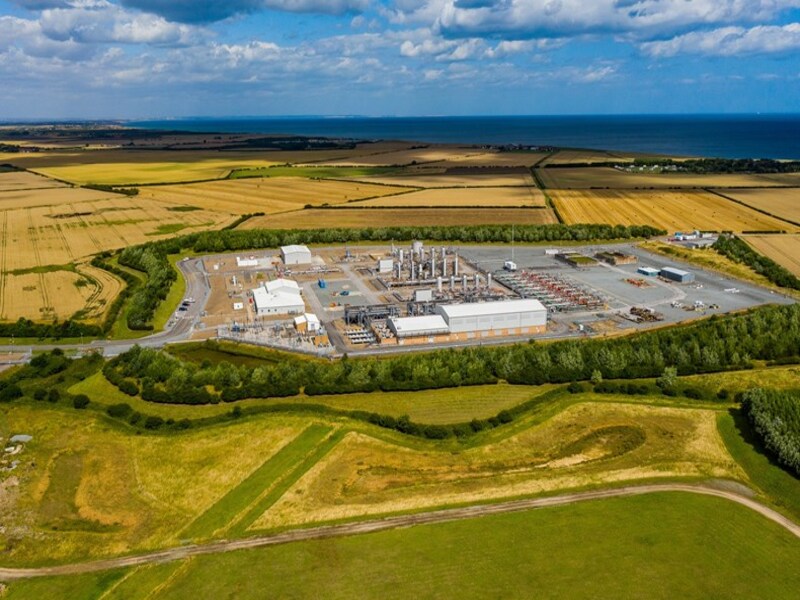SSE Thermal and Equinor announced plans to develop the project in 2021.
An Environmental Impact Assessment (EIA) Scoping Report of the project was published in March 2023. In the same year, a scoping report was submitted to the East Riding of Yorkshire Council.
In August 2023, the Aldbrough Hydrogen Project was selected by the UK Government for the final stage of Net Zero Hydrogen Fund, which supports the development and deployment of new low-carbon hydrogen production.

Subject to planning consent, construction works are expected to begin in 2024 and take around 36 months. The project may begin production in 2028.
Once complete, the hydrogen storage facility will have an initial capacity of at least 320 gigawatt hours (GWh). This is enough to power more than 860 hydrogen buses annually.
The project will also support in decarbonising the carbon-intensive Humber region and help UK to achieve net zero by 2050.
Aldbrough Hydrogen Pathfinder Location
The Aldbrough Hydrogen Pathfinder Project is proposed to be built within the brownfield site of the Aldbrough Gas Storage Facility in East Yorkshire.
The Aldbrough Gas Storage Facility, co-owned by SSE Thermal and Equinor, commenced commercial operations in June 2011. The final cavern (ninth) of the facility started production in November 2012.
From the Aldbrough Gas Storage Facility, a below-ground brine discharge pipe runs east to the North Sea. This area is included in the scoping boundary.
A temporary construction area has been identified to the north of the pipe and coast. A second construction area will be 100m south of the site.
The site can be accessed via the B1242 Aldbrough Road.
Aldbrough Hydrogen Pathfinder Infrastructure
The Aldbrough Hydrogen Pathfinder Project is expected to involve the development of a green hydrogen production, storage and energy generation facility by converting one of the site’s existing natural gas storage caverns.
The electrolysers, a water treatment plant, a demineralised water storage facility, a hydrogen buffer vessel, a low-pressure compression facility, and an electrical compound will be housed in the western plot.
The eastern plot will house the cooling system, a dehydration and letdown plant, a higher-pressure compression plant, and an Open Cycle Glass Turbine (OCGT).
The marine infrastructure of the project will include the existing High-Density Polyethylene (HDPE) pipe that needs to be re-lined and re-burial of the existing HDPE pipe.
The re-lining of the existing HDPE pipe is expected to consist of excavation of the pipe on the beach near the clifftop compound by using a mobile excavator (conventional excavation method). The excavation is expected to be conducted on approximately 750m2 area.
The excavated material will be used to refill the pit after re-lining is completed. The pipe will be cut, the cut end will be retrieved and will be followed by the re-lining of the existing pipe with a smaller diameter pipe.
The smaller diameter pipe will be pushed through the existing pipe to the end of it around 600m from the shore. After re-lining, the HDPE pipe will be reburied to a suitable depth.
Operational Details
The Aldbrough Hydrogen Pathfinder Project will integrate a salt cavern storage facility (20-gigawatt hour (GWh)), an electrolytic hydrogen production facility (35 megawatts of electrons (Mwe)), and a low carbon hydrogen power production through OCGT of up to 50Mwe net capacity.
The project will deliver up to 4,000 kilograms per hour (kg/h) of hydrogen from the caverns.
The Proton Exchange Membrane Electrolyser will produce hydrogen via electrolysis. The project will receive renewable power from the grid under Renewable Power Purchase Agreements (RPPAs) complying with the Low Carbon Hydrogen Standard.
The electrolyser will utilise demineralised water and will be supplied from the existing licenced Aldbrough borehole water supply.
Aldbrough’s existing natural gas storage caverns (Aldbrough 1) will be converted into a salt cavern storage facility. The cavern is filled with natural gas so it will be rewatered and then filled with hydrogen displacing the water/brine.
The cavern will produce and store hydrogen which will be distributed through an above-ground pipeline connecting the OCGT.
The OCGT will operate on up to 100% hydrogen and export power back to the grid during low renewable power availability.
The electrolysis will also produce oxygen which will be transferred to the atmosphere. The use of oxygen from the project in hospitals and other applications will be accessed.
Contractors Involved
The EIA Scoping Report of the project was prepared by Environmental Resources Management (ERM).
Siemens Energy and Black & Veatch were selected by SSE Thermal to deliver the Front-End Engineering and Design (FEED) of the project. Siemens Energy and Black & Veatch are already delivering FEED.
SSE Thermal has joined hands with Siemens Energy for the delivery of the first phase of the project.